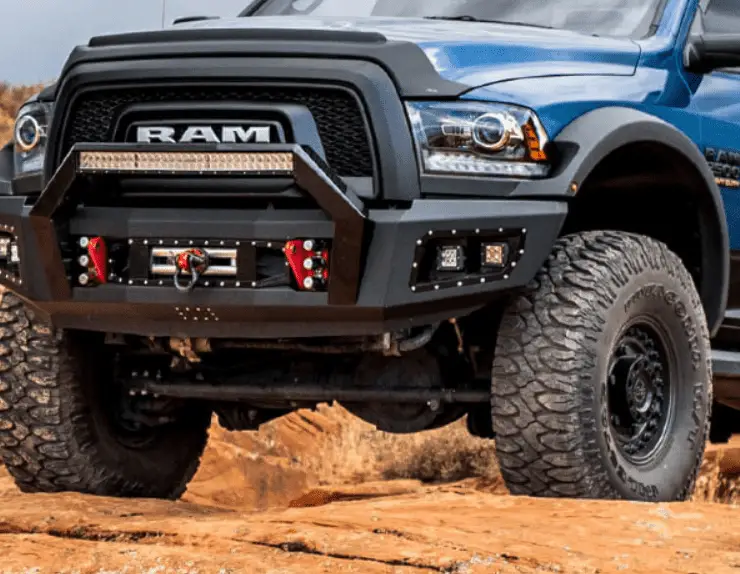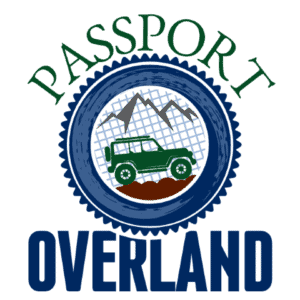
Tires and wheel sizes are a hot topic in the world of overlanding. What are the different tire sizes available for overlanding? How to match the size of the wheel to the size of the tire?
What Tire Size is Best for Off-Road Driving?
33 and 35 inch tires are great candidates for being the best tire size for overlanding. However, if you look at the cost, 35s are not that worth the investment because 33s can conquer terrains 35s can with much lower fuel consumption and better control. Therefore, the best tire size for overlanding is 33 inches.
So on and so on. Opinions on upsizing the tires may differ from one overlander to another, but no one can deny the importance of paying attention to the tires before traversing the less-traveled roads.
Think of all the weight that your tires have to carry and the different terrain that they have to pass through during your entire overland trip. The tires of your vehicle must be big and strong enough to carry all the weight of your 4×4 while driving through rough terrain. But what specific tire size should you upsize to?
To help you decide, this article will first enumerate the pros and cons of different offroad tire and wheel sizes, and then we’ll decide which tire size is best for overlanding.
Things to Consider Before Upgrading Your Tires
But wait….before you choose a tire size, there are just some things you have to consider. You can’t just upgrade to monster tires because they look cool and everyone does the same. You have to think of your vehicle first, your budget, and your overland trails. To be more specific, here are the things you have to consider before upgrading your tires.
- BUDGET. How much are you willing to spend to upsize your tires? Are you on a tight budget? Is upsizing your tires your priority?
- ORIGINAL TIRES. Determine the load, speed ratings, size, and other specs of your original tires. This will be your basis for upsizing your tires. The upgraded tires should be capable of carrying the weight of your overland vehicle. Its speed should also match how fast you normally drive.
- YOUR VEHICLE. Take into consideration your vehicle and what tire sizes work with it. Vehicle manufacturers actually recommend what tire sizes you can get when you upsize.
- TERRAIN. Choose your tire size according to the trails you will encounter on your overlanding trip if they’re rocky, snowy, or muddy.
- SUSPENSION. See if your suspension supports your chosen tire size. If not then you might need to upgrade your suspension as well.
- USE OF YOUR VEHICLE. If overlanding is not your full-time job and you use your vehicle on-road most of the time, like going to work, then upsizing may not be a practical decision.
Different Off-Road Tire Sizes
Tires with a size between 31 inches and 40 inches are the best for overlanding. They provide higher ground clearance and a bigger contact patch, especially when you air down. These two will ensure that you have a comfortable and safe ride no matter what terrain you want to conquer. First, we’ll mention the specifications of a typical tire in these sizes, and then we’ll see the pros and cons that come with these features.
1. 31 Inch Tires
To have a clearer image of what 31s look like, let’s break down the tire size code for this tire. A 31-inch tire has a tire size code of 31×10.5R15. This means that this tire has a height of 31 inches and a width of 10.5 inches. The R15 code means that this tire is designed to fit wheels that are 15 inches in diameter.
Lastly, these tires will work well with a 1.5 to 2-inch lift. If you’re looking for the best 31-inch tire on the market, you can go for the Milestar Patagonia M/T Mud-Terrain Tire.
Pros
A 31-inch tire requires less investment as compared to tires larger than it. With this small tire size, you can spend less on suspension lift kits, maintenance, and installation. This is a benefit if you are on a tight budget. This tire is small, so it doesn’t cause that stress to other components of your vehicle, like your suspension. Lastly, this tire size fits well with smaller 4x4s.
Cons
This tire size may not work well offroad. When you go overlanding, you’ll encounter extreme road conditions where a typical tire won’t be able to pass through. If you use 31-inch tires, you can drive on the beach, but it would be difficult for you to tackle the sand. A 4×4 with this tire can only pass through gravel roads with no ruts and no large rocks.
2. 33 Inch Tires
This tire size has a diameter of 33 inches, which means that it’s 33 inches tall. It has a width of 15.5 inches and requires wheels that are 15 inches in diameter. If you want to install 33-inch tires on your 4×4, you will need a lift of 2.5-3 inches. A good 33″ tire, like the Yokohama Geolander A/T G015 can give you 611 revolutions per mile.
Pros
Let’s use a 31″ tire as a reference point to better grasp how much ground clearance you can have from this tire. If you upgrade from 31″ to 33″ tires, you increase your vehicle’s ground clearance by 1″. A 33″ tire will give your vehicle a footprint measuring up to 23.5 cm. This is 1.5 cm longer than that of a 31″ tire, which is only 22 cm in length.
Smaller tires, like 33s, weigh less. This means that they are easier to control and they consume less fuel.
Cons
Increased ground clearance and an improved contact patch can help you drive through rough terrain, but it will be difficult to pass through ruts, deep mud, and sand dunes in the desert. The best ground clearance for off-road driving is between 8-10 inches. A 33-inch tire can’t give you enough ground clearance to conquer uneven paths, deep ruts, and deep mud.
3. 35 Inch Tires
A 35″ tire is 35 inches tall and 12.5 inches wide. It fits wheels with a diameter of 15 inches. A lift kit is necessary in order to fit a 35″ tire on your vehicle. In this case, you will need at least a 3″ lift.
Pros
The greatest advantage of fitting 35s to your overland vehicle is much higher ground clearance. This can help you drive more easily and comfortably, even in rough terrains such as deep mud, ruts, and rock steps. This tire can also give you a footprint measuring up to 24.5 cm.
If you air down, it can even give you a better contact patch to not get buried in the soft sand of the desert. Just make sure to always equip your vehicle with Air Compressors for Overlanding to get back your vehicle capable of on-road driving.
Cons
When you choose to have 35″ tires for your vehicle, you will need to spend on a lift kit. This is an additional cost. They also weigh more, so expect that your fuel consumption will increase, thus adding another cost. Fitting 35s on your vehicle might require more modifications to your vehicle in order for it to fit this large tire.
4. 37 Inch Tires
This is the starting point to having monster tires for your overland vehicle. A 37″ tire is 37 inches tall and 12.5 inches wide. In order for these tires to fit on your vehicle, you will need a lift of at least 3.5 inches. Keep in mind that you can only have these tires if your vehicle allows them. You can find good 37″ tires here.
Pros
You can feel the improved contact patch and ground clearance depending on where you’re coming from. If your original tires are 31″, you will experience greater improvement in the contact patch of your vehicle when you drive off-road. From 31s to 37s, you can increase your ground clearance by 3″. If your overlanding trip includes boulders and rock crawling, these tires are for your vehicle.
Cons
A 37-inch tire weighs 120 pounds, and you already know the consequences of this: higher fuel consumption and difficulty in control. Modifications to your vehicle and lift kits are additional costs you will have. This is a discouraging aspect if you are working on a tight budget but still want to experience adventure on the road.
These tires are difficult to control and balance while you drive off-road. This may require you to practice driving before you go on your overland trip.
5. 40 Inch Tires
A 40″ tire is the definition of a monster tire. These tires are 40 inches tall, 13.5 inches wide, and require wheels that are 20 inches in diameter. You will need a lift of more than 3″ in order to fit this tire. Well, if you have a monster truck, fitting 40 inches is not a problem.
Pros
A monster tire that is 40 inches tall looks bolder and cooler off-road. This can be an advantage if you want to impress other people on the road. If your overlanding trip involves more driving off-road, 40 inches tires can give you higher ground clearance and a better contact patch.
Cons
Bigger wheels can stress the other components of your vehicle, especially your suspension. These tires are not only expensive, but they also weigh a lot, making them difficult to control and consuming more fuel than you normally buy.
What is the Best Tire Size For Overlanding?
To determine which tire size is the best, determine your kind of overland trip. If it involves a lot of driving off-road then you can go for 35s to 40s. But you should take note that these require lifts and additional costs. Off-road driving is just a part of overlanding. If you want an affordable tire upgrade but perform well offroad, 33s are a practical choice.

